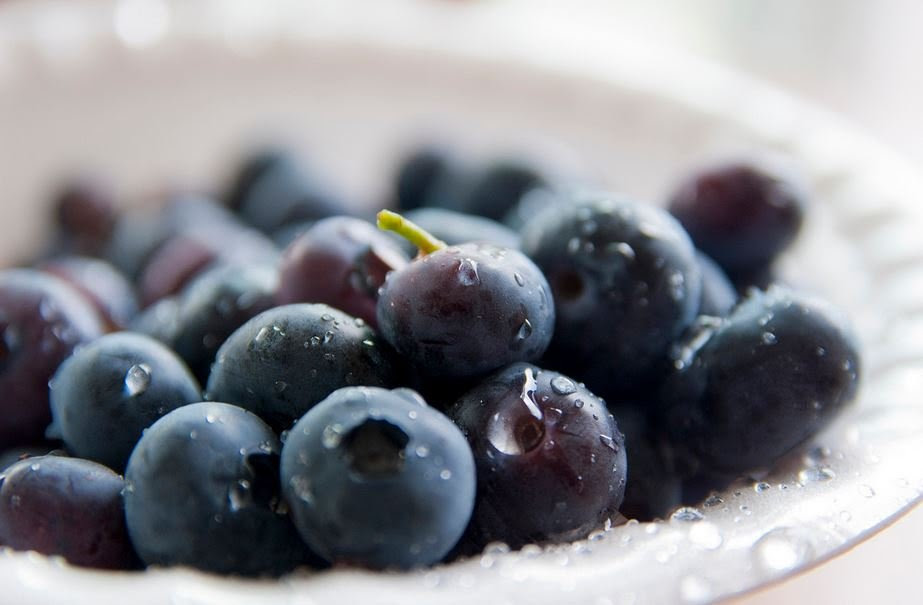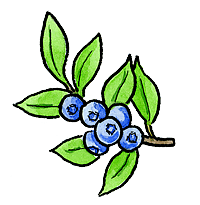
Soil Needs
We recommend that you have your soil tested when planting blueberries. For healthy growth, blueberries do best in soil with a pH of 4.5 to 5.5. Consult your local Cooperative Extension Service for a soil test and advice on how to change your soil pH, if necessary.
You can also test soil pH yourself using a pH Test Kit. To lower soil pH, you can either apply a fertilizer that’s formulated for azaleas, hollies and other acid-loving shrubs, or an elemental sulfur.
If needed, lower the pH of your soil more gradually by digging in lots of peat moss and pine needles. It may take a year or more to see a change. Once the soil is acidic enough, you can plant blueberries and maintain soil acidity by mulching heavily every year with pine needles and shredded oak leaves.
<2>Planting
If your blueberry plants arrive bareroot, don’t expose the roots to wind or sun before or during planting. If your ground is frozen, or for some other reason you are not ready to plant, soak the roots in a bucket of lukewarm water for up to 24 hours (no longer). You can then delay planting for a week or two if you keep the roots moist and in a dark, cool place where the temperature is above freezing (35 to 40 degrees F).
If the weather is warm, it is best to plant immediately. Do not store a dormant bareroot plant in a warm place — such as in your house — for more than a week or so. Plants stored under warm conditions are much more likely to be damaged by cold spring weather.
Space the plants in increments that will accommodate the size of the mature plant. Dig a hole that is twice as wide and deep as the diameter of the root system. The plants should be set into the planting hole at the same depth they were growing in the nursery. You should be able to see a soil line around the stem which will indicate how deep it was.
Spread the roots and position each plant so that all the roots will be covered with soil. Be careful not to plant too deep, and do not let the roots dry out during the planting process.
Take any peat moss that is packaged with the plant and mix it into the planting hole. Add more of your own peat moss in heavier soils. If you use peat moss or a planting mix that contains peat, make sure that it is saturated with water before putting it in the planting hole. Peat that is not saturated can wick moisture away from the plant and cause the roots to dry out. Pack the soil firmly around the roots and water thoroughly.
Watering
Plants should be watered weekly during the first year, unless they receive plenty of rain.
Fertilizing
Wait four to six weeks after planting before adding any fertilizer. Do not apply fertilizer in late summer or fall. This could stimulate new succulent growth that could become injured during winter.
Use a balanced fertilizer, such as All-Purpose Fertilizer. This slow-release fertilizer contains sulfate of potash (potassium sulfate), which is good for blueberries. Do not use fertilizer that contains potassium chloride, which can adversely affect blueberries.
Yellow leaves on blueberries can be corrected with a foliar application of 1 tablespoon of iron chelate in a gallon of water sprayed over the leaves. You should see greener leaves in a few days. However, be aware that yellowing leaves may be a sign that the soil pH is too high. Have your soil tested for pH and amend it as needed.
After two to three years, you should should see 12-18″ of new growth per year. If not, check your soil pH and continue to amend the soil with compost and fertilizer as needed.
Flower Removal and Pruning
During the first year, it is important that your plants develop a strong root system and produce a lot of new shoots. Remove all flowers during the first year and do not allow any berries to develop. Do not prune your blueberry plants for two years.
After two years, prune annually in early spring, before leaves form. Remove weak or damaged branches and any branches less than 6″ long. Mature, thick branches in the center should be removed to improve air circulation and sun penetration. The goal is to have about 12 main stems per plant with a good mix of old and new. Any stems more than 2″ in diameter should be removed.
Mulch
Sawdust mulch is commonly spread along the entire row of blueberries with extra sawdust mounded around the canes, often to a depth of 8″ or more.
Bird Netting
The best way to protect fruit from being damaged or eaten by birds is to cover it with netting. Bird netting should be installed at least two to three weeks before the fruit matures.
